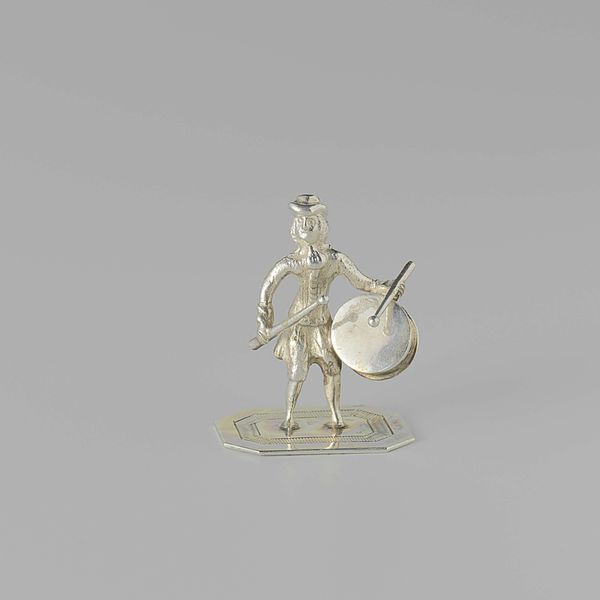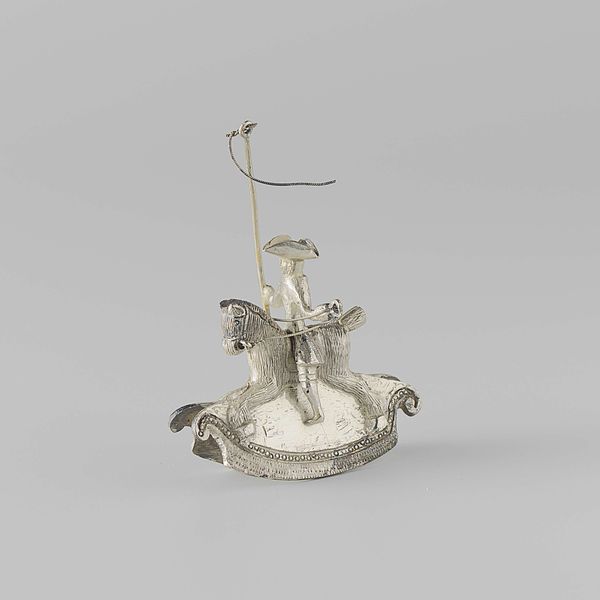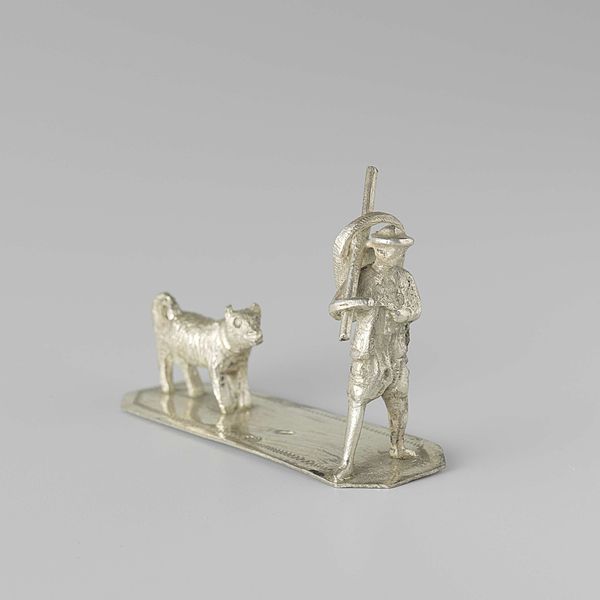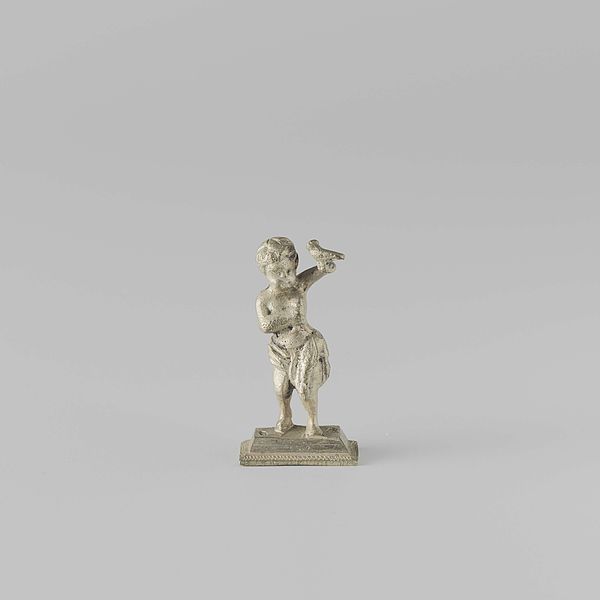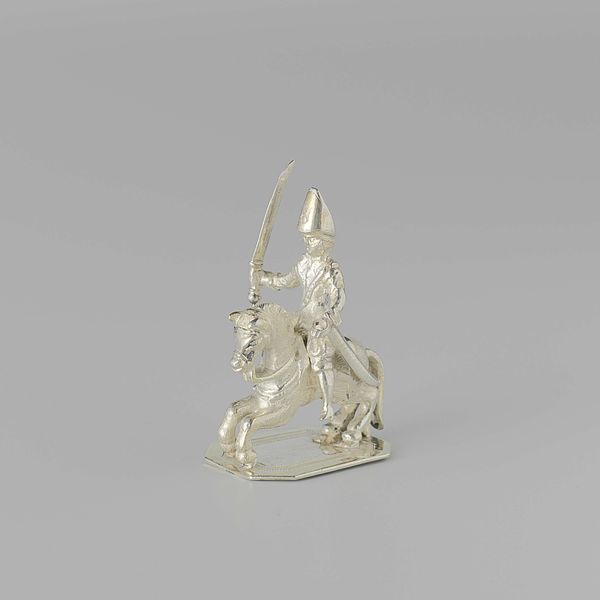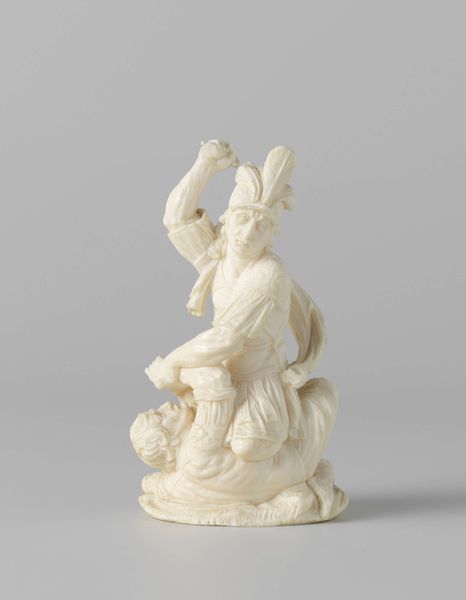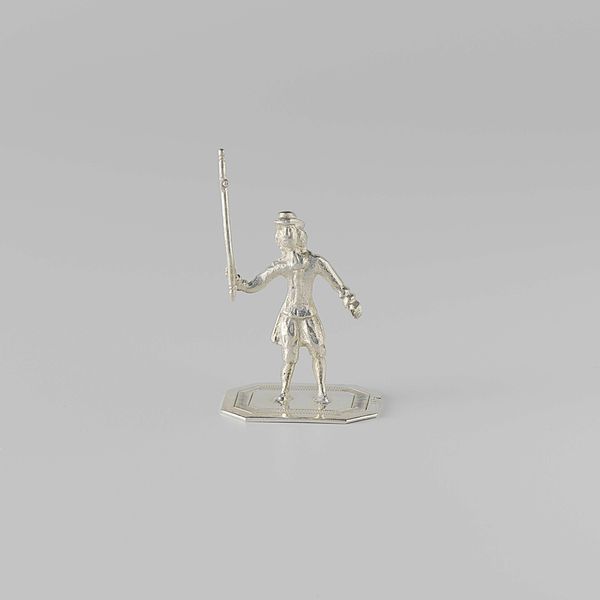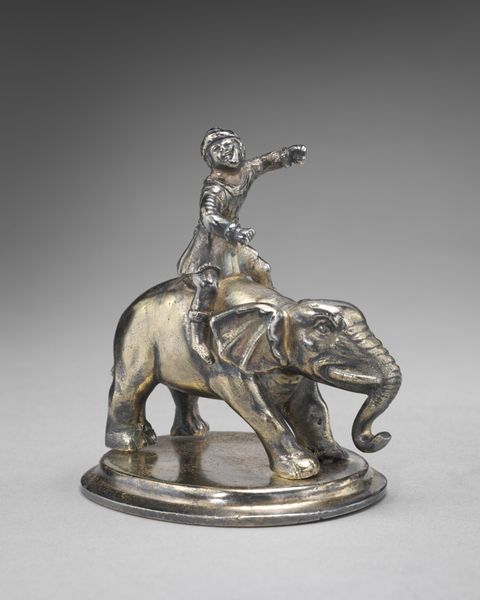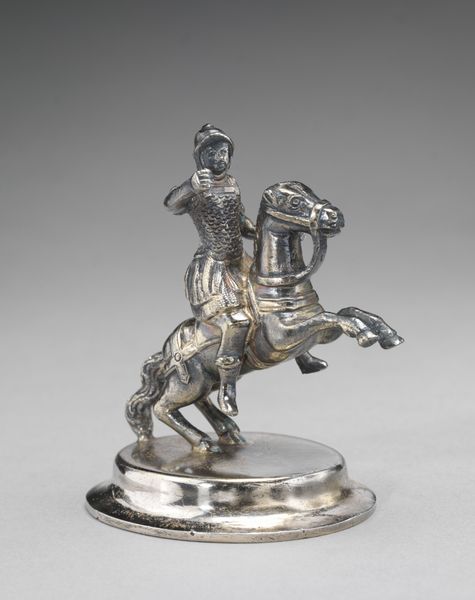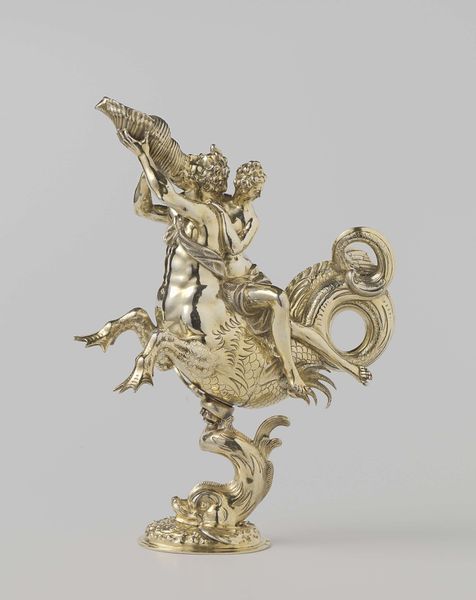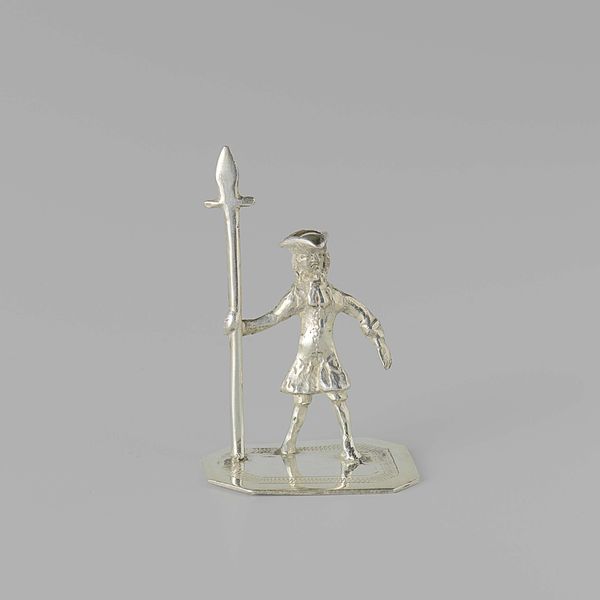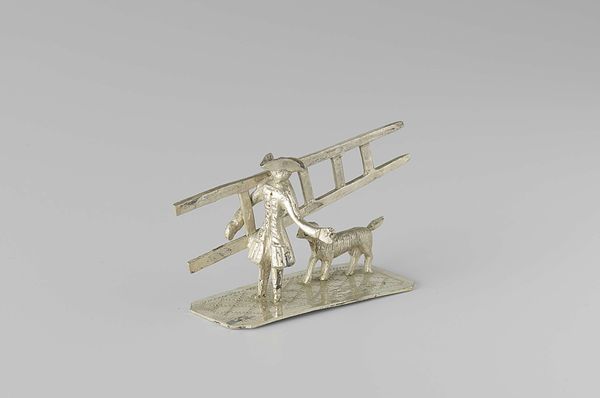
silver, metal, sculpture
#
silver
#
baroque
#
metal
#
landscape
#
figuration
#
sculpture
#
miniature
Dimensions: height 3.8 cm, width 2.6 cm, length 3.5 cm, weight 31.64 gr
Copyright: Rijks Museum: Open Domain
Curator: What strikes me immediately about this miniature silver sculpture, "Ruiter te paard," created in 1757 by Johannes van (I) Somerwil, is its palpable stillness. It's as if time itself is suspended. Editor: That's a wonderful observation. The scene's almost frozen in motion. Silver, of course, has a long history of symbolizing wealth, status, and even purity, reflecting a very specific kind of social power at the time. Given its diminutive scale, do you think this was intended more as a personal object? Perhaps something to display wealth in a more intimate setting? Curator: Absolutely. We must also think about what a horse and rider might have symbolized. In many cultures, particularly in the 18th century, the image carries strong echoes of military prowess, nobility, and control. He carries a flag, doesn't he? What's that telling us? Editor: That unfurled flag indeed speaks volumes. In the context of 18th-century Dutch culture, it could represent allegiance, authority, and conquest, all wrapped into this shiny little object. And look at the detail in the horse's musculature and the rider's clothing – quite impressive for such a small piece. Curator: The detail also tells us a lot about the artisan's skills and the commissioner's desire for precision. How does this miniature format reflect back on bigger issues around class, power, and perhaps the colonial landscape in this historical period? Editor: I think miniatures were often used as reminders – little portable symbols of grander ideas and ambitions. Given your interest in contemporary readings, how might we re-examine "Ruiter te paard" through a post-colonial lens today? Curator: Thinking intersectionally, we can question the historical narratives of domination represented. Who were excluded from this carefully crafted narrative of power? Whose lands were conquered, resources extracted, to fuel this display of opulence, shrunk to the size of a trinket? The miniature normalizes power by containing it. Editor: Those are vital questions to pose. Examining this miniature allows us to unpack not just artistry and status, but also the ethics of historical representation. The object’s existence as a shiny emblem also challenges us to re-contextualize these images, no? Curator: Precisely. What a deceptively complex little thing! Editor: Indeed. Thank you, this was enlightening.
Comments
No comments
Be the first to comment and join the conversation on the ultimate creative platform.

